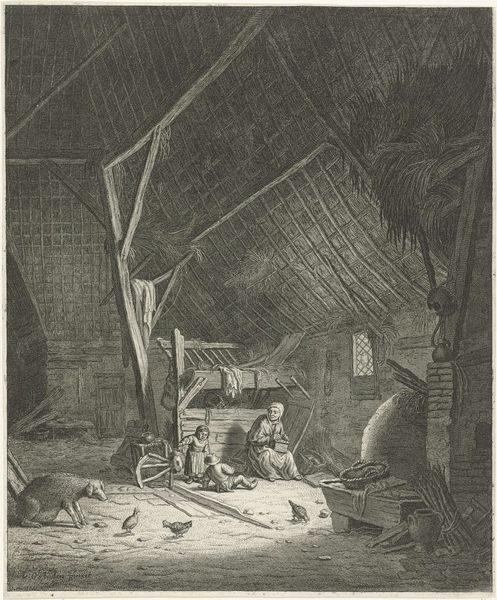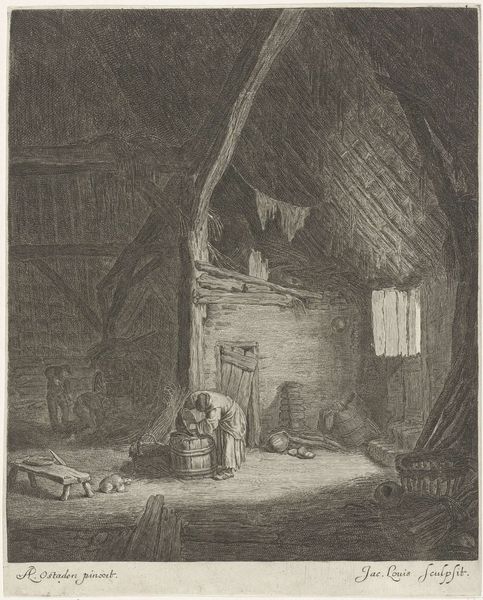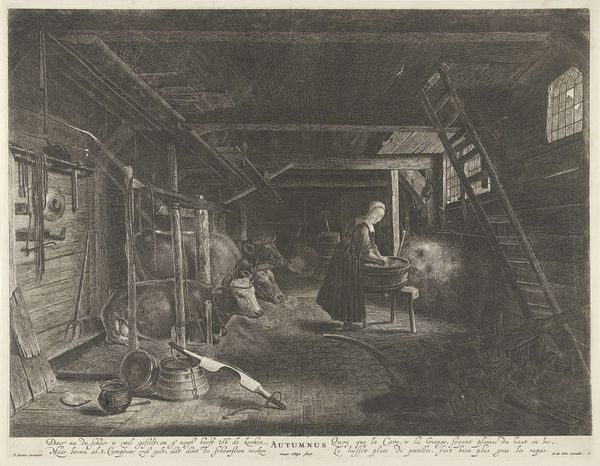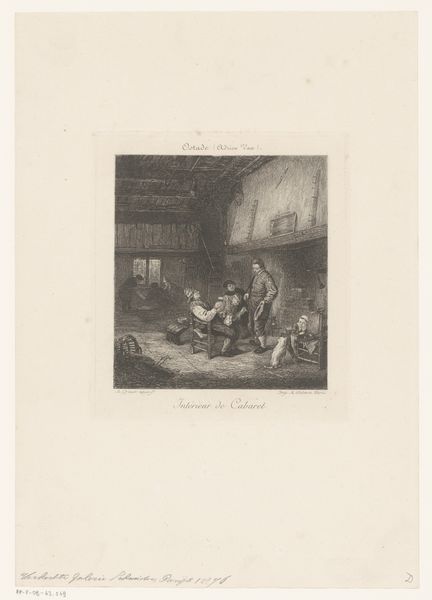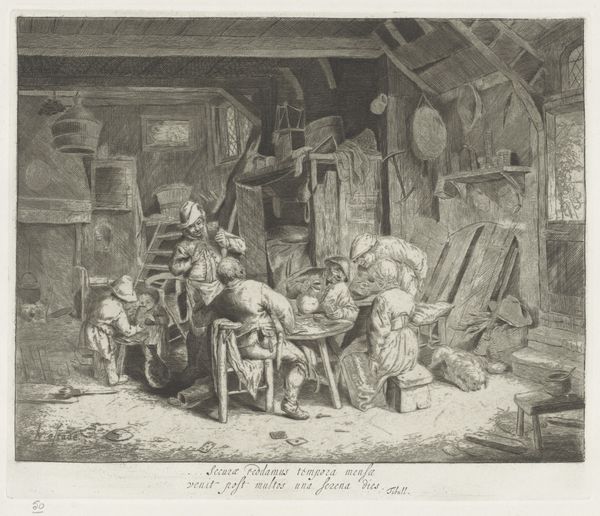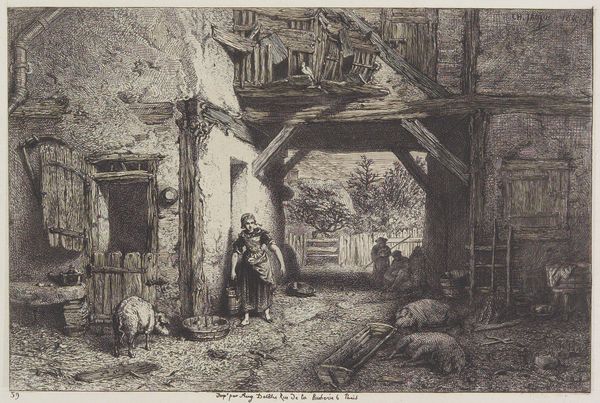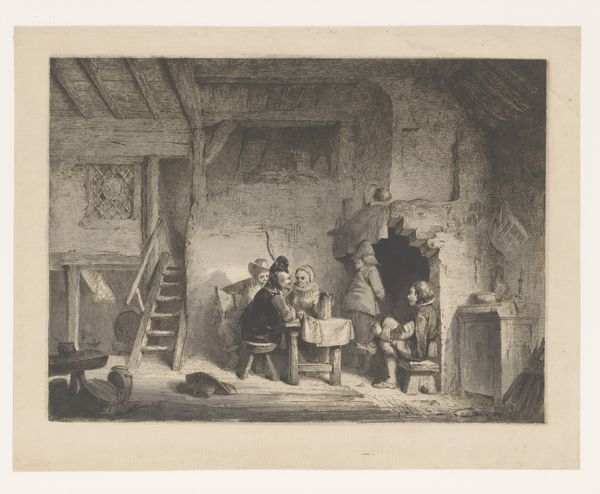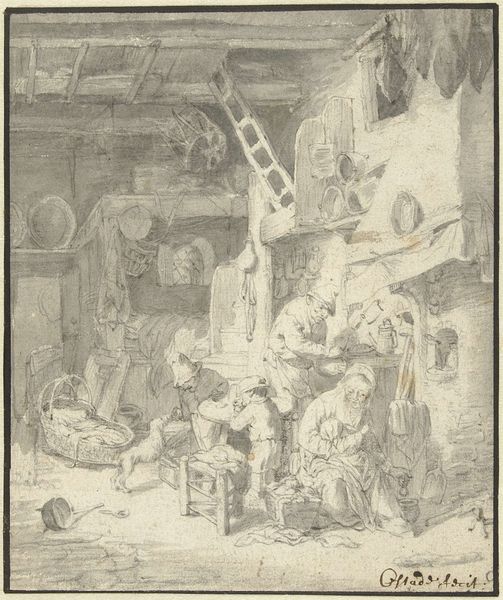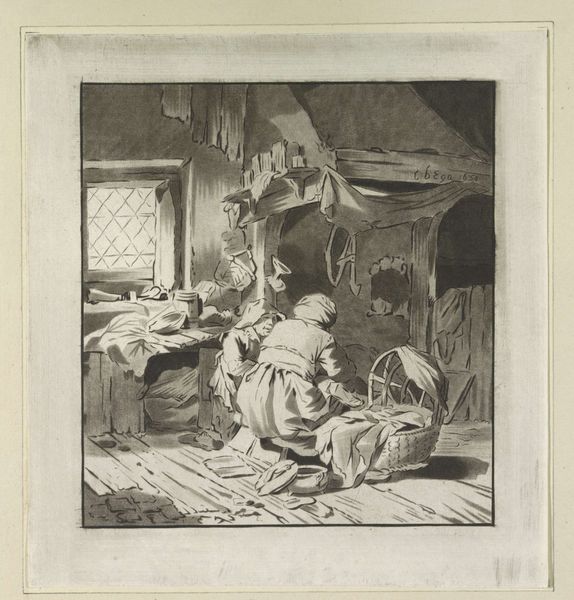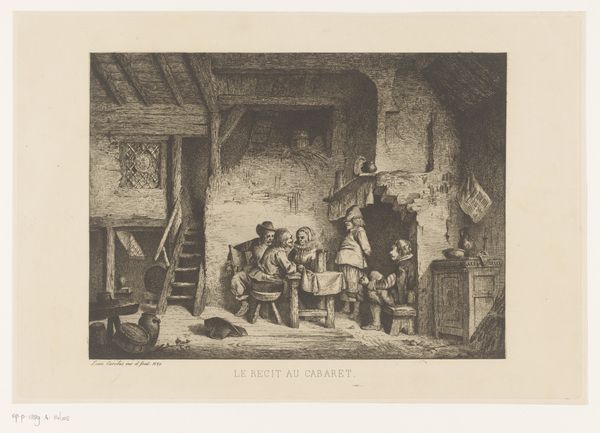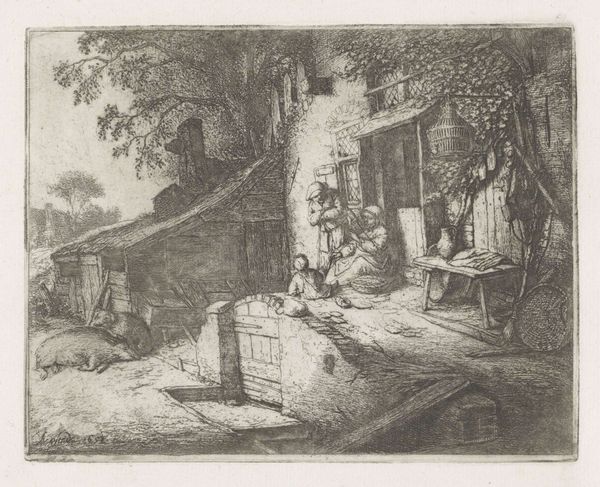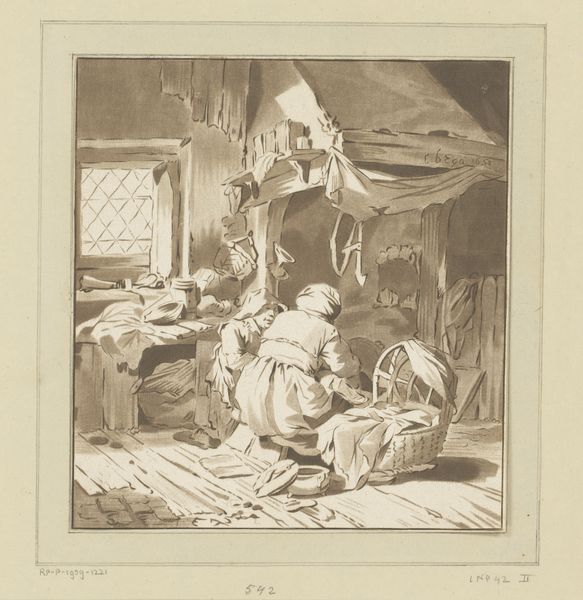
print, engraving
#
dutch-golden-age
# print
#
landscape
#
genre-painting
#
engraving
#
realism
Dimensions: height 252 mm, width 228 mm
Copyright: Rijks Museum: Open Domain
Curator: Today we’re looking at Jacob Louys’s “Interior of a Farmhouse with a Farmer and a Wife,” an engraving likely created sometime between 1630 and 1673. What are your initial thoughts? Editor: The scale of this farm interior is grand, yet the etching gives the whole space a cozy and somewhat desolate feel. It's mostly dark. The arrangement and presentation of all those ordinary objects is so meticulous that the overall effect is strangely compelling. Curator: Yes, it's precisely this convergence of grandiosity and homeliness that interests me. Consider the historical and societal context, namely Dutch Golden Age genre painting, which served to establish notions of an ideal middle class rooted in ideas of moral virtue. Editor: So you are pointing out that what we’re seeing is actually a staged construction, one in which laborers become stand-ins for bourgeois moral virtues, rather than portraits of actual rural people? It does beg the question— what sort of labor created these tools? Or thatched the roof overhead? I notice there is so much meticulous cross-hatching to create texture. Curator: Exactly. The way the farmer and his wife are presented as exemplars of quiet domesticity works to normalize a certain social order, where rural labor is romanticized instead of critiqued. Their position at the periphery is not incidental to the whole. They provide a stage. Editor: It is interesting that the most prominent figure is actually that big dog sleeping under the bench. So many details: a broom, a bucket, firewood... It almost becomes an inventory of tools necessary for a certain type of rural life. Did the printing-making processes affect how these farm tools were produced and used at that time, or consumed as an image? Curator: That's an interesting angle to explore further—the relationship between agricultural tools and artistic tools, or rather the material conditions and networks that supported this image and the daily life it depicts. There's a strong dialogue here between our contemporary understandings of identity and representation, and the early modern techniques of image-making. Editor: Absolutely. Thinking about Louys's laboring hands versus the invisible hands behind the image opens up complex questions about craft, commodification, and class, even today. Curator: Exactly. I'm left pondering how Dutch art helped shape modern notions of virtue, domesticity, and even our relationship to labor itself. Editor: Indeed, and considering that these thatched materials depicted are likely no longer extant, how this single print is an evocative archive, albeit from a staged point of view.
Comments
No comments
Be the first to comment and join the conversation on the ultimate creative platform.
